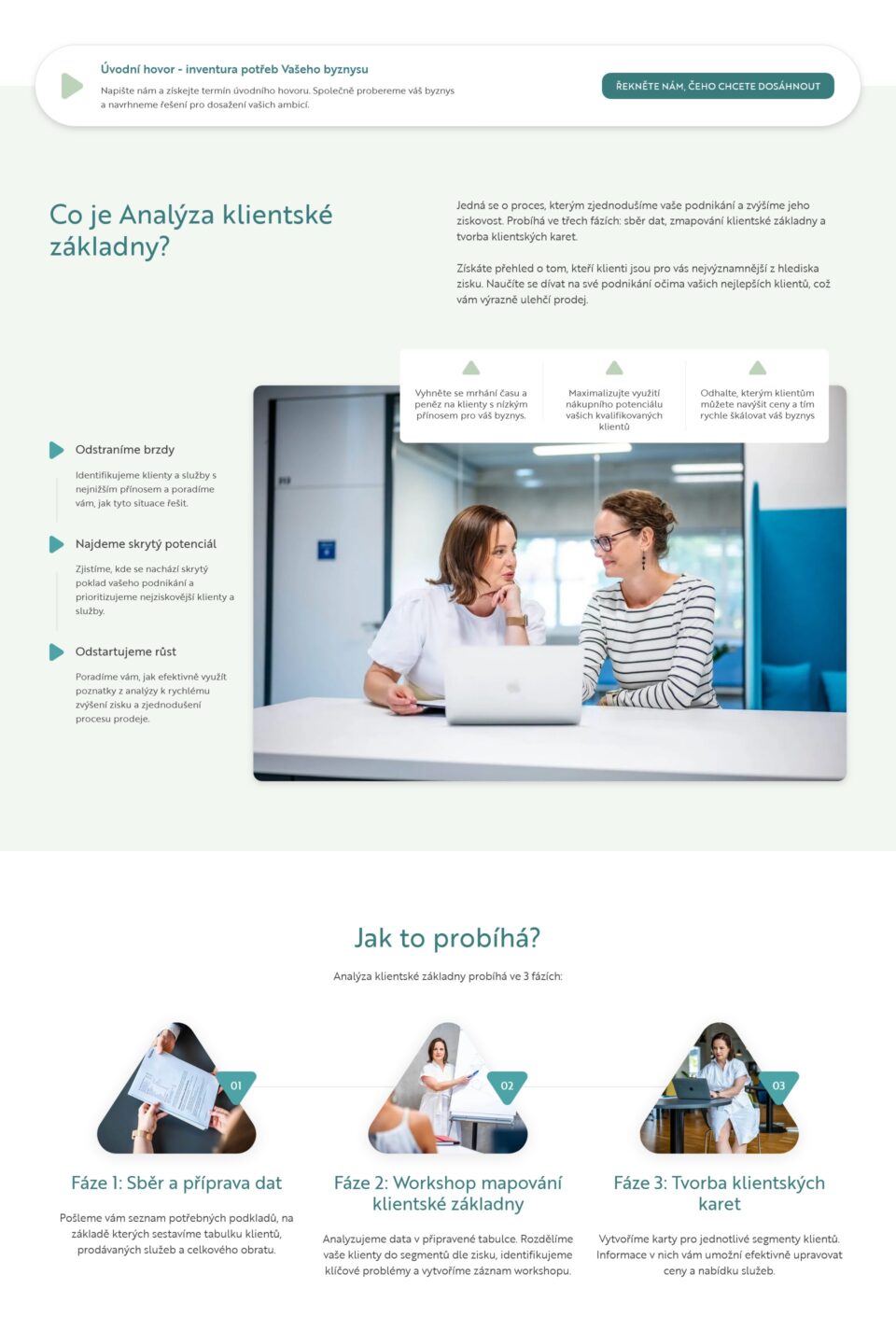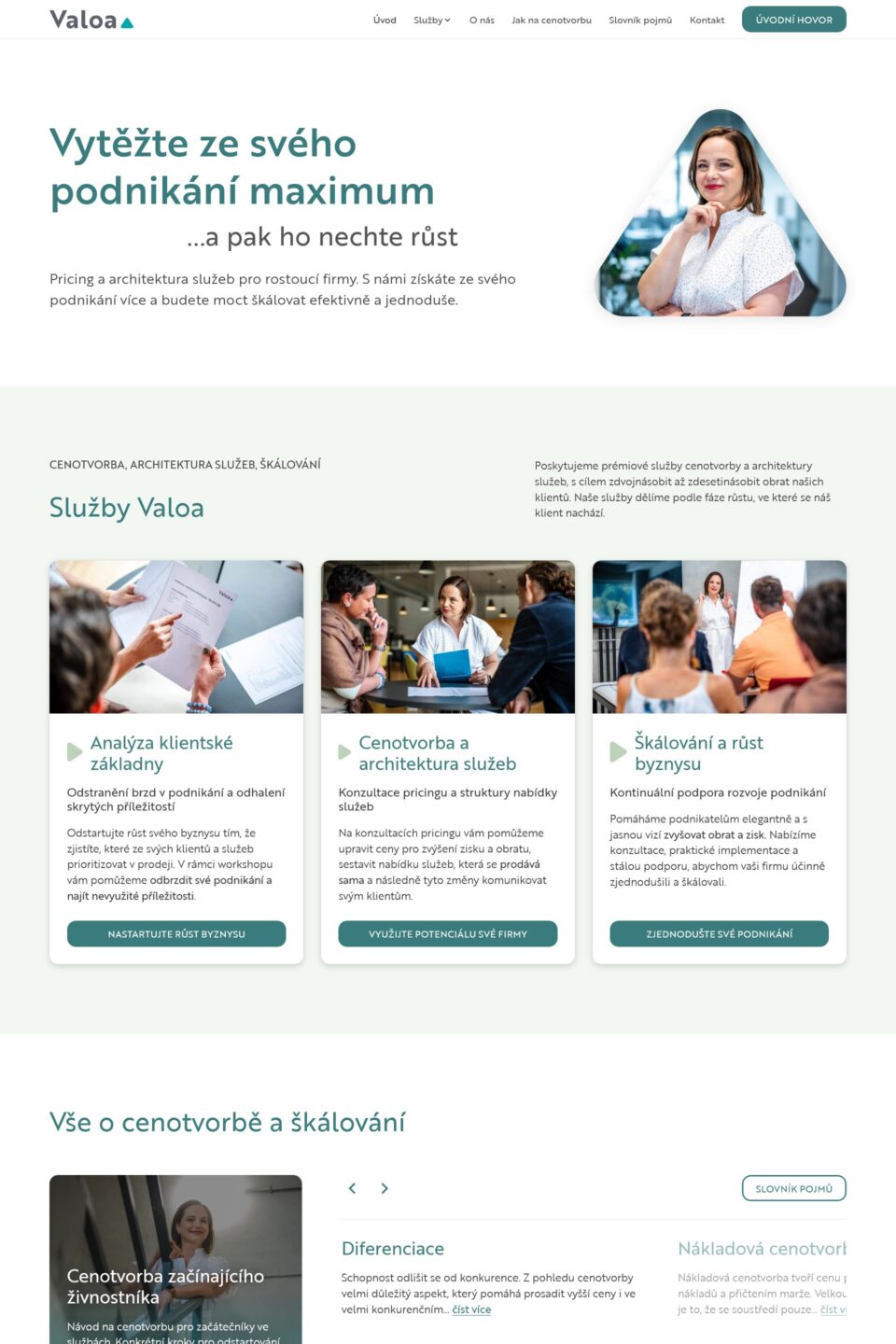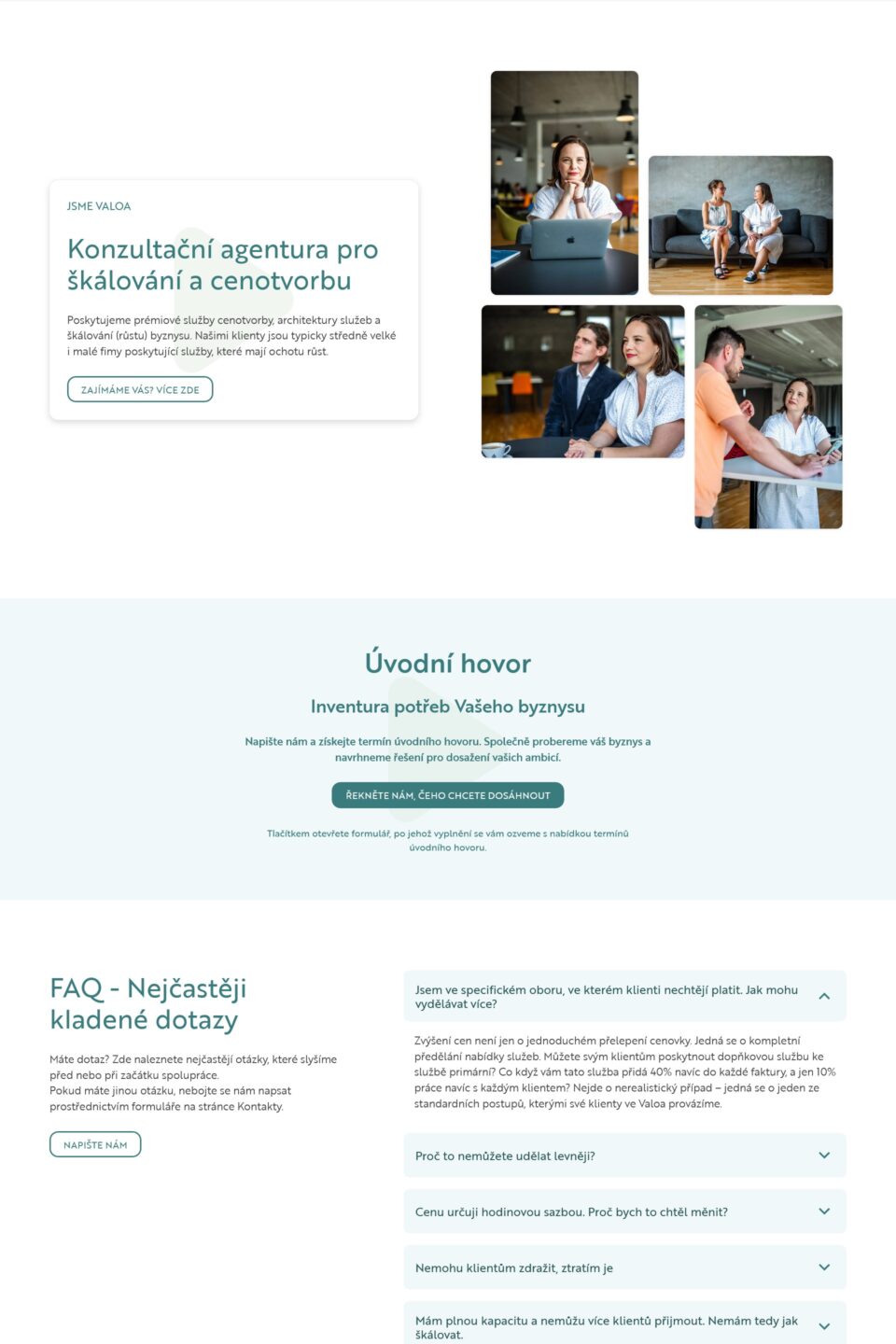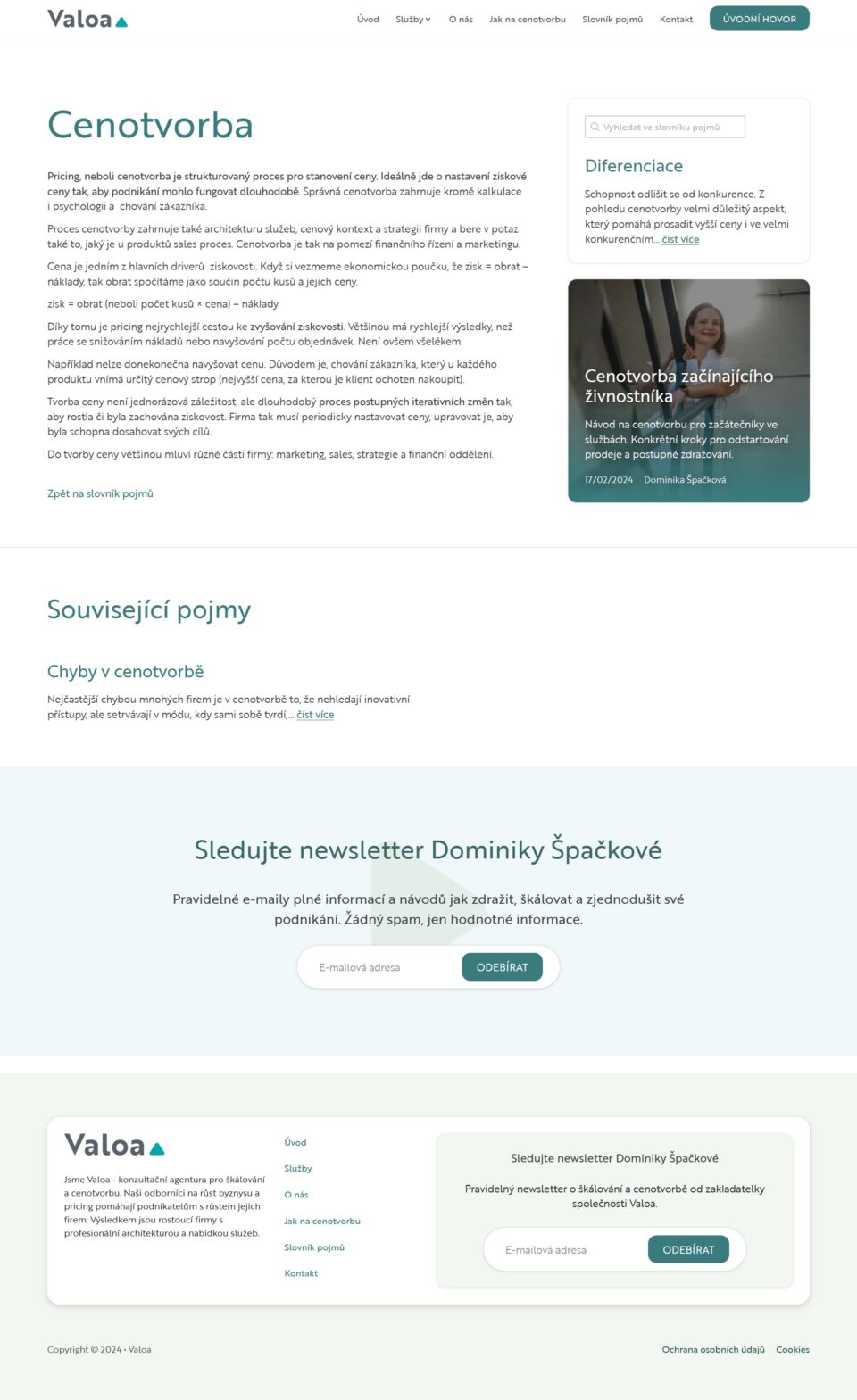November 2023: I was tasked by my long-time client, Dominika Špačková, to create a new website for her new business – Valoa, a pricing consultancy, one of the few in Czechia.
This was an important project for both of us. I was beginning to apply a brand-new approach (for me) to creating websites – a much more holistic one that includes proper research, UX, copywriting, etc., and for her part, the new company was a way to start dominating the Czech consulting market with her unique know-how.
The project took some 2–3 months to get from start (Research & Planning) to finish (Optimization & Launch), during which I worked closely with my dear client and held around six meetings to discuss various parts of the project.
What comes after a website is launched? What should be in place before the project starts?
A website is something like a digital keystone, a central place for a business’s marketing activities—a place where, if you drive qualified visitors and optimize that place for those visitors, your sales will grow.
As of December 2024 (when I started writing this case study), most business owners understand that just having a website is not enough—you need a way to bring people into it and interact with them.
This wasn’t always the case. In the past, people often expected their $1,000 website would magically bring them enough visitors to remove any need for marketing or sales… This was often my experience back in 2013–2016, when I started getting into this industry.
Nowadays, most people understand that simply building a website is not enough—you also need a plan to drive visitors to it.
However! Thinking about all this stuff after the website is built is only part of the story. There is another bunch of work that needs to happen for any business if they want to have success online (or offline)—and that must take place before the website project even starts.
I’m of course talking about the fundamentals of marketing your business:
- Defining your products
- Setting your prices
- Finding and describing your target audience and ideal client
- Writing down your marketing strategy
- Structuring your services in a comprehensible way (not just for you—but for your website’s users!)
- The list could go on but that’s way beyond the scope of this case study.
Not until these things are taken care of can we proceed with a successful website project and subsequent marketing. Without good service structure, how do we do keyword research and then page structure? Without good pricing, how do we prioritize products and set up PPC campaigns for good ROI? Without a good understanding of your clients, how can you expect website copy to make any sense to them?
If this work hasn’t been done beforehand – it will have to be done during the website project itself. That’s not a place you or I want to end up. Your website really should be a manifestation of your marketing strategy, not a shot in the dark.
Luckily for me, this specific client specializes in business consulting, pricing, service structure and business scaling.
So, the work beforehand was done by them—and I could start my website project while guiding them in the process of translating business strategy into a good website.
How did it go?
The UX and copywriting were challenging—but in a good way. I had all the information I needed from my client, and in a couple of sessions and iterations, we had the entire website “done” inside the wireframes I designed and filled with page content.
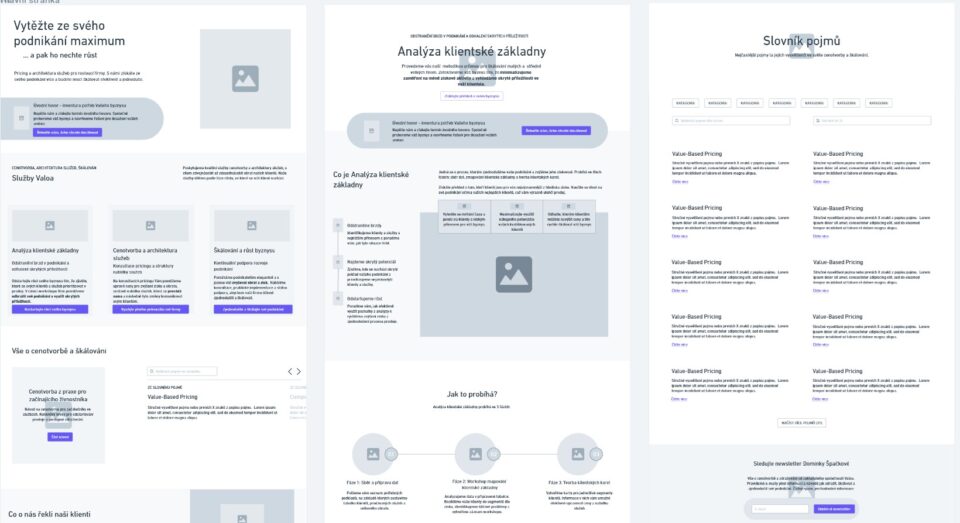
Several wireframes with copy for the various pages/templates for Valoa.cz website. Showcasing my UX and copywriting parts of the website creation process.
The subsequent UI work—creating a user interface design mockup in Figma—was exciting and resulted in a design that my client likes, while also being easy to read and navigate for the website’s users.
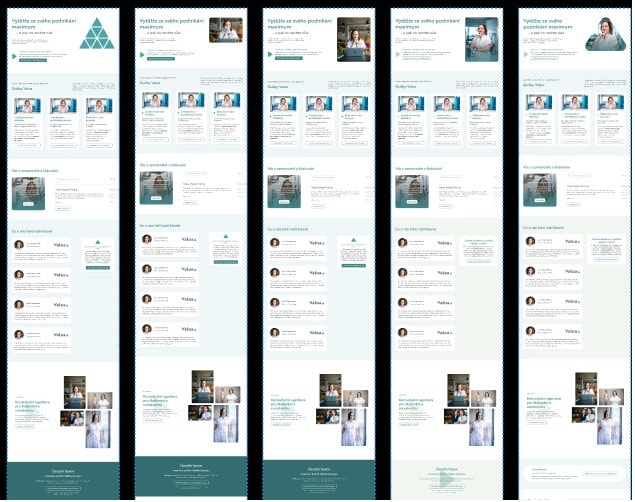
Screenshot of discarded UI iterations in Figma for the Valoa.cz project.
The client already had her branding guidelines in place, which made my work much smoother—having your brand well-defined is an important item to check off before starting your website project.
Then the development work started. Usually, this part of the project requires the least input from the client, and this website was no different. For me, development is my favorite part—everything is in place (layouts, design, copy, functionality definition), and I just have to piece it all together in a way that adheres to best practices. After launching the website, my client decided to write the longest article I’ve ever seen on how to structure and price your services as a beginner. Anyone who can read Czech has to check it out.
The whole process was fun—I wish every website project went exactly like this.
What did I learn?
The project Valoa.cz was a milestone for me—before this project, I was doing my job in a completely different way. I would only focus on UI & Dev work while leaving all the strategic parts of the process to my clients. This was not good.
Since Valoa.cz, I have started doing everything that a web designer & developer (or agency) should be doing—translating the business’s marketing strategy into a website that works on all levels. Kevin Geary’s educational content was the most instrumental in me making this change.
This project is still one of my favourite things I’ve ever made. I hope I’ll get to improve on it in the future; and I hope that you, dear reader, have gained something from reading through all this. Anyway, thank you for reading.
